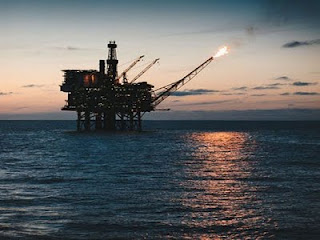We are moving through very interesting times as far as India’s Energy scene is concerned. In the last few years, after the Indian economy was unshackled from some of the restraints (the period called ‘economic liberalization’), our spectacular GDP growth has been globally noticed. To fuel this fast growing economy, India needs to secure its Energy needs, both indigenously and through imports. The most exciting of the indigenous discoveries have been offshore.
To keep pace with India’s growing energy needs, the government in 1997 came up with NELP (New Exploration Licensing Policy). For over four decades after independence, offshore exploration was dependent upon nomination by GoI mainly to ONGC. In the pre NELP period (from 1990 to 1996), India had just 28 offshore blocks with 29 oil fields. However, NELP saw a sudden surge in Offshore Development Area (ODA). From 12 companies engaged in the year 2000, India now has some 82 companies engaged in E&P (Exploration and Production). Licenses have been given for 263 blocks, with 200 blocks being operational, and 10 under production. With NELP IX, blocks will move as far away as Andamans and Mumbai Deepwater.
The Directorate General of Hydrocarbons (DGH) was established in 1993 under the administrative control of Ministry of Petroleum & Natural Gas through a Government of India Resolution. Objectives of DGH are to promote sound management of the oil and natural gas resources having a balanced regard for environment, safety, technological and economic aspects of the petroleum activity. The latest DGH data shows that India’s offshore production now accounts for 2,16,000 BPD of oil and 65 MMSCMD of Natural Gas. These account for 28% and 48% respectively of India’s total indigenous production. So, therein lies the importance of offshore E&P. At a glance, the data for 2010-11 shows:
|
Crude Oil
MMT
|
Natural Gas
MMSCMD
|
|
|
Domestic Demand
|
141.8
|
82.1
|
|
Production
|
37.6
|
52.2
|
|
Self Sufficiency
|
26%
|
63%
|
We have a VATMS (Vessel and Air Traffic Management (or Monitoring) System for the ODA in the West. Efforts are in hand to have one for ever-increasing assets on the Eastern seaboard. However, the fact that the Navy cannot be everywhere to protect these growing assets throws newer challenges in cooperative security. These are multifold for Indian seaboards since despite 26/11 and urgent need for the same, our fishing activity is still unregulated. Who knows that in the garb of fishermen we may have the terrorists deliberately trying to do damage to the offshore assets? We have to become more serious about both coastal security and security of offshore assets. The Somali pirates have, off late, reached our western coast, at least. We have to quickly have an effective security scheme in place, lest we should be surprised again. The sooner we start being serious about it the better it is for us. For the last two years, for example, we have read newspaper reports of 23 fast patrol boats to be acquired by ONGC for manning by Navy personnel for patrolling the ODA. It is understood that these are still more than a year away to become reality.

